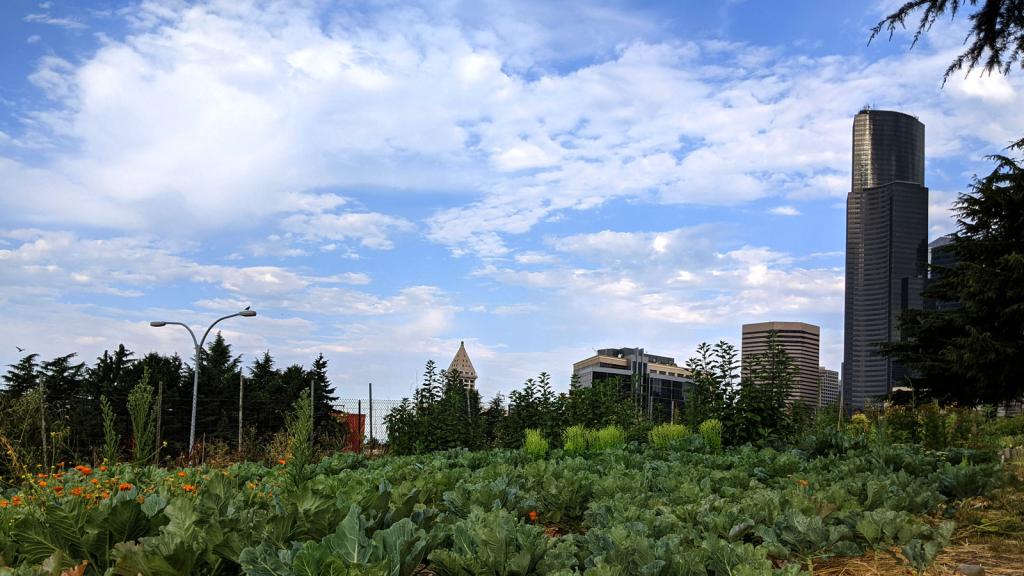This spring, right before Earth Day, New York City passed its very own Green New Deal — an ambitious plan for eliminating carbon emissions by 2050. Los Angeles launched its own plan with the same name and goal just a few weeks later (ouch, that’s gotta hurt!). Boston’s got a climate plan. So do Seattle and Minneapolis, Portland, Oregon, and Portland, Maine. We’re still waiting on Portland, Texas, but across the country, cities are announcing climate action plans like it’s going out of style.
So how did Providence, Rhode Island, which announced a standard, net-zero-by-2050 pledge in 2016, end up with a newly released Climate Justice Plan that looks so different from the parade of municipal “Green New Deals?” And could other cities get there, too?
“For a while, we were calling it a climate action plan with an equity lens, and we didn’t really know what it was going to be,” said Leah Bamberger, Providence’s director of sustainability. “At the end of it I was like, ‘Oh — this is a climate justice plan.’”
Yes, it’s got all the typical trappings of a climate action plan: Get 100 percent of municipal buildings running on renewable energy by 2030. Increase electric vehicle trips to 80 percent of total vehicle miles traveled by 2050. Install heat pumps in about half the city’s residences by 2035. Zzzz.
But honestly, it’s tough to find any piece of the plan that doesn’t directly address the disproportionate impacts that pollution and climate change have on marginalized communities.
Low-income communities of color bear the brunt of the pollution from Providence’s waterfront industry, including a hot-mix asphalt plant that emits particles capable of causing lung damage in those living nearby, a 75-acre Shell oil terminal, and the fossil fuel-powered ships and trucks that transport it all. The plan aims to completely eliminate emissions in frontline communities by 2050.
Residents are concerned about green gentrification, where the addition of parks, better transit options, and even health measures, like cleaning up pollution, end up pushing people out of newly improved neighborhoods. The plan will “stop the displacement of communities of color in Providence,” by prioritizing affordable housing for historically displaced groups, making sure landlords can’t raise the rent when basic health, safety, and energy-efficiency improvements are made, and passing on energy savings to tenants (not just landlords).
“We’re doing our work the right way and we’re cleaning up the city,” said Vatic Kuumba, a project team lead on Providence’s Racial and Environmental Justice Committee. “We don’t want people to be pushed out.”
The plan is also notable for how it will be carried out: By 2025, the Office of Sustainability will have to collaborate with community organizations on every initiative it undertakes, a model known as collaborative governance.
“Essentially, it doesn’t matter what the plan is — it could hit all the boxes, but if community is not involved at the table making the decision, then it won’t be a great plan,” said Pol Tavarez, another project team lead on the environmental justice committee. “We’ve seen it before, time immemorial: Somebody makes a decision without consulting the people who are going to be affected.”
Then Tavarez offers one of the mantras of the growing environmental justice movement: “Nothing about us without us.”
More traditional environmental organizations (of the Sierra Club variety) weren’t even involved in the decision-making process, Bamberger said — a crucial, if controversial, step toward prioritizing frontline communities.
“The only way that we got to those outcomes is that we started with different ingredients,” she said. “It’s not rocket science. We want different results, but we neglect to actually change the inputs.”
According to the American Council for an Energy Efficient Economy, just 24 of 75 major U.S. cities address equity outcomes in energy and climate planning. Providence, Seattle, and Minneapolis are the only three to earn full points on the council’s Clean Energy Scorecard.
But in Seattle, which launched one of the first city-level climate action plans in the United States in 2013, environmental justice efforts came later, with a community-centered Equity and Environment Agenda released in 2016.
And while Minneapolis incorporated environmental justice concerns into its climate action plan’s original 2013 launch, frontline community members had to lobby the city for their inclusion: “Of deep concern is the fact that the environmental justice constituency (specifically communities of color, low-income communities, and the most vulnerable) is being disenfranchised from the process,” reads a 2012 note to the Minneapolis director of sustainability, cosigned by environmental justice groups and members of frontline communities in the Minneapolis area. “Community and environmental justice representation must be present at all levels in the process.”
Providence, on the other hand, started the justice work before it even launched the climate action planning process, at which time the environmental justice committee had already been operating for around two years, according to Bamberger. The committee’s 10 representatives from frontline communities work to let the city know about those communities’ concerns, which they gather through meetings, phone calls, and a survey that asks questions like: “How do you get around the city?” and “What is good about that and what would you change?”
“The committee was created to simply provide an information pathway between things that are happening at the city level and what is happening at the grassroots and in our activist communities,” said Andrea Atkinson, who facilitated discussions between the city and the environmental justice committee.
A crucial part of building that bridge: a two-day anti-racism training led by the nonprofit People’s Institute for Survival and Beyond, which is required for environmental justice committee members and some members of the city staff, including Mayor Jorge Elorza and Bamberger’s team at the Office of Sustainability. By 2025, under the Climate Justice Plan, anti-racism training will be required for all city staff.
“It doesn’t sugarcoat anything, it’s not a diversity training. It is truly a hard-hitting anti-racism training,” Bamberger said. “So that demonstrated a commitment to the work, and it also gave us a shared language and understanding of the systems that we’re actually working to dismantle.”
That doesn’t mean that the relationship between city staff and the environmental justice committee is without its tensions. Committee members with whom I spoke said that in working on the Climate Justice Plan, they often had to push the city to go further on certain policies. Atkinson said that some of the big victories that made it onto the final draft include the recognition of housing as an environmental issue, and a dedicated section on collaborative governance and holding the city accountable.
“The struggle is a part of this process,” Tavarez said. “If things get hard, that’s not a reason to stop.”
For other cities looking to implement a truly collaborative, justice-centered climate plan, the key, according to numerous people involved in the Providence process, is time: time to build trust, time to troubleshoot, and time to make changes. Announcing a climate goal one year and expecting to have a plan ready to announce next Earth Day — a real thing some cities do — isn’t going to cut it, Bamberger said (although the process will look different city-by-city).
It’s sort of the turtle-and-the-hare analogy: All this time, cities have been taking shortcuts in the race to announce the best climate plan. Turns out, Providence knew the way all along.
“Asking people who have already been doing the work for their expertise and experience in a way that shows you value them and provides resources and capacity to them makes a huge difference,” Atkinson said. The folks on the environmental justice committee, she said, “have been fighting for this their entire lives.”


